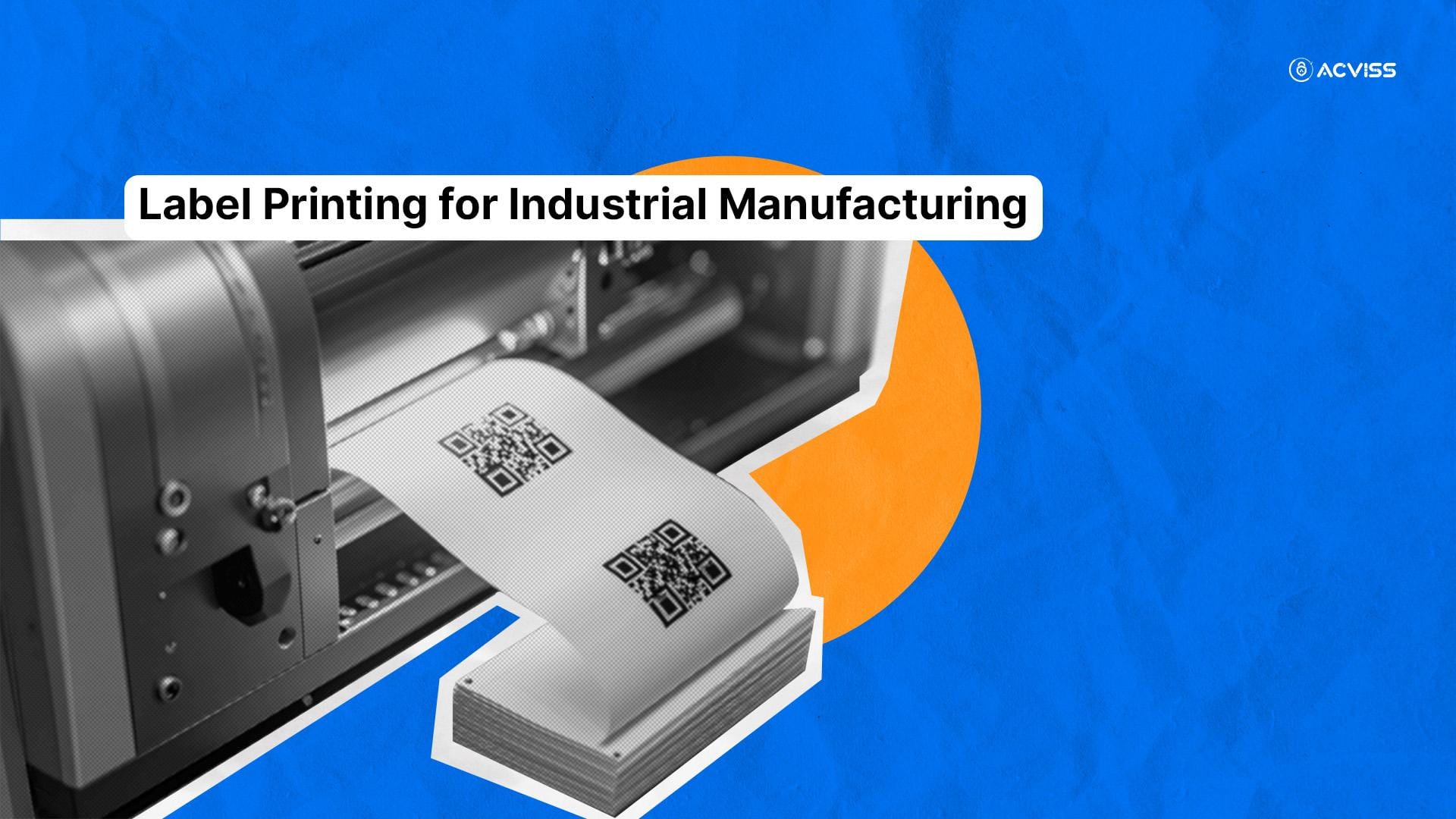Label Printing for Industrial Manufacturing: A Crucial Link in Chain of Trust

Every product that rolls off a manufacturing line carries a story. How it was made, where it came from, who handled it, and whether it's genuine are all questions that today’s brands are expected to answer. Surprisingly, one of the most powerful tools for telling that story is the label.
Often overlooked or treated as a mere compliance checkbox, label printing has quietly evolved into a cornerstone of product traceability, brand protection, and anti-counterfeiting technologies. From ensuring regulatory compliance to verifying authenticity in global markets, the humble label has become a strategic asset for manufacturers looking to stay competitive and secure.
This article unpacks the growing significance of industrial label printing, how it intersects with supply chain management and intellectual property protection, and why modern brands can’t afford to treat it as an afterthought.
Why Labels Are More Than Just Stickers
At first glance, a label may seem like a basic component: paper, ink and adhesive. But for manufacturers dealing with high-value goods, fast-moving supply chains, and the rising threat of counterfeiting, labels play a vital role in enabling product authentication and brand verification.
Counterfeit goods now account for over 3% of global trade, cutting deeply into margins, damaging reputations, and undermining consumer confidence. Effective label printing isn’t just about aesthetics or meeting legal standards; it’s about signalling trust.
Labels, when combined with technologies like tamper-evident seals and digitally verifiable codes, can:
- Track and trace each product through its lifecycle
- Serve as a gateway for product authentication by consumers and inspectors
- Protect brand IP by deterring counterfeit attempts
- Enable efficient recall and inventory audits with serialised traceability
Smart Labelling: Bridging the Physical and Digital

The transformation of labels from static identifiers to intelligent digital assets has created new possibilities in product traceability and trademark protection. Today, labels can be embedded with non-cloneable security patterns, serialised QR codes, NFC tags, or digital watermarks that carry encrypted data, linking each product to a digital verification record.
For example, when scanned using a smartphone, these smart labels can direct users to a secure portal confirming the product’s authenticity. This process ensures not only brand authentication but also provides a direct channel for brands to communicate with customers.
Acviss’ Origin solution integrates seamlessly into this ecosystem. It offers a secure, blockchain-backed track and trace platform that works in tandem with tamper-proof, uniquely printed labels. With Origin, every label becomes a key that unlocks a secure chain of custody from manufacturer to consumer.
Practical Use Cases Across Industries
1. Automotive Manufacturing
Labels printed with durable, tamper-resistant materials and secure QR codes ensure that every component can be traced back to its origin. This supports not just warranty claims, but also combats counterfeit parts entering the aftermarket supply chain.
2. Pharmaceutical and Healthcare
In an industry where lives are at stake, mislabelling or unauthorised replication is unacceptable. Regulatory compliance demands precision and traceability. Secure labelling linked with authentication solutions helps ensure product integrity across geographies.
3. FMCG and Consumer Electronics
As brand loyalty becomes increasingly fragile, providing consumers with easy tools to verify what they’re buying is more important than ever. Smart labels help customers validate the product and enhance post-sale engagement with care instructions or loyalty benefits.
Technical Considerations for Label Printing in Manufacturing

To deliver traceability and authentication at scale, manufacturers must choose their labelling systems carefully. Here are key considerations:
Print Technology
- Digital printing for variable data, serialisation, and batch-level customisation
- Thermal transfer for high-durability applications in extreme environments
- Laser marking for tamper-proof, high-speed labelling directly on metal or plastic surfaces
Label Materials
- Polypropylene and polyester labels for durability in outdoor or high-heat environments
- Void and destructible materials for tamper evidence
- Eco-friendly substrates for brands focused on sustainability
Data Integration
Labels should not exist in isolation. They need to work hand-in-hand with ERP, MES, and WMS systems to ensure real-time tracking and minimal human intervention. Automation in label generation, application, and scanning dramatically reduces errors and enhances traceability.
Challenges Manufacturers Face and How to Solve Them
1. Counterfeit Label Reproduction
Fraudsters can easily duplicate simple labels using commercial printers.
Solution: Use cryptographic markers and non-replicable digital fingerprints, such as those offered in Acviss' secure labelling system, which cannot be cloned or reproduced.
2. Label Application Errors
Manual or misaligned label applications can cause delays, rework, and compliance issues.
Solution: Invest in inline printing and verification systems that integrate directly into production lines and automatically check for errors in real time.
3. Environmental Degradation
Labels exposed to moisture, abrasion, or chemicals may fade or peel, compromising both compliance and brand credibility.
Solution: Choose material-appropriate labels based on usage environment, with UV-resistant inks and heat-tolerant adhesives as required.
Why Labels Are Central to Brand and IP Protection

Brand protection strategies increasingly rely on labels not just as identifiers, but as the first and sometimes only line of defence against IP theft and unauthorised replication.
Think of labels as digital fingerprints that sit on every single product, tying it back to its source. When done right, they not only act as proof of origin but help enforce trademark rights and deter infringement.
In a time when customer trust is fragile and regulatory expectations are tightening, brand authentication through label printing becomes a legal safeguard, a customer assurance tool, and a business continuity enabler.
Looking Ahead: The Future of Labelling
Labelling technology is poised for rapid growth. With increasing adoption of AI, IoT, and blockchain in manufacturing ecosystems, labels will do far more than display text—they’ll connect data points, trigger automation, and personalise consumer engagement.
Imagine a world where a single scan of a product label:
- Verifies product origin and ownership
- Confirms customs compliance
- Activates warranty registration
- Alerts supply chain systems to inventory movement
- Allows end-users to report counterfeits in real time
We’re not far from this reality. In fact, with platforms like Acviss Origin, many of these capabilities are already available today.
Final Thoughts
Treating labels as a mere formality is a missed opportunity. They are your product’s passport, its certificate of authenticity, and its interface with customers, regulators, and logistics providers. With the right technology and strategy, industrial label printing becomes a cornerstone of robust supply chain management, anti-counterfeiting solutions, and long-term brand integrity.
Interested to learn how label printing can support your brand’s traceability and authentication goals? Get in touch with us and explore how Acviss can help turn your product labels into powerful tools for protection and trust.
